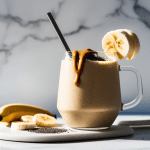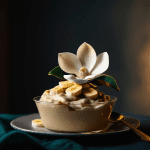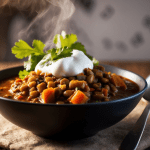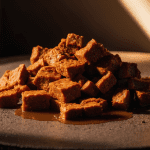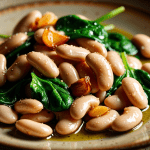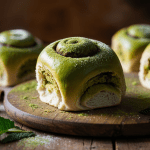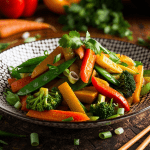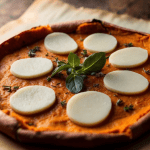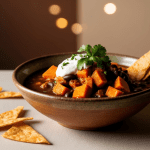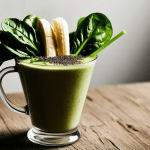Vegan butter is a fantastic alternative for anyone looking to avoid dairy, whether due to dietary restrictions, ethical reasons, or simply because of a plant-based lifestyle. It can be used in place of regular butter in a wide variety of recipes, from baking to sautéing, spreading, and everything in between.
Making your own vegan butter at home allows you to control the ingredients and customize the flavor to your liking. The result is a creamy, spreadable butter that works just as well as traditional butter, but without any dairy or animal products.
Vegan Butter Recipe: Simple & Creamy
Makes: About 1 cup of vegan butter
Prep Time: 10 minutes
Chill Time: 1-2 hours
Ingredients:
- 1/2 cup coconut oil (solidified)
- 1/2 cup olive oil or sunflower oil
- 1/4 cup unsweetened almond milk (or any plant-based milk)
- 1/2 teaspoon salt (optional, adjust to taste)
- 1 tablespoon nutritional yeast (optional, for a cheesy flavor)
- 1/4 teaspoon turmeric (optional, for color)
- 1 teaspoon lemon juice or apple cider vinegar (for acidity)
Instructions:
1. Melt Coconut Oil:
- Place the coconut oil in a heatproof bowl. Gently melt it using a microwave or on the stovetop until it becomes liquid. Let it cool slightly, but keep it in a liquid state.
2. Blend the Ingredients:
- In a blender or food processor, combine the melted coconut oil, olive oil, almond milk, salt, nutritional yeast (if using), turmeric, and lemon juice or apple cider vinegar. Blend until smooth and creamy.
3. Set the Butter:
- Pour the mixture into a small container or a silicone mold. Use a spatula to smooth it out.
- Place the container in the fridge or freezer to allow the butter to set for at least 1-2 hours. The coconut oil will solidify, giving the butter its creamy, firm texture.
4. Serve:
- Once the butter has hardened, it’s ready to be used! Spread it on toast, use it for baking, or simply enjoy it as a butter substitute in any recipe.
Tips for Vegan Butter:
- Storage: Store homemade vegan butter in the fridge for up to 2 weeks. For longer storage, it can also be frozen in a sealed container for up to 3 months.
- Flavor Variations: Feel free to experiment with the flavor by adding garlic powder, fresh herbs, or other spices. For a savory butter, try adding a pinch of smoked paprika or fresh dill.
- Oil Substitutions: You can swap the olive oil for avocado oil, or use a blend of oils for a different texture or flavor. Coconut oil is key for its firmness and spreadability when chilled, so try to keep that in your recipe.
- No Coconut Flavor: If you prefer a butter without any coconut flavor, use refined coconut oil (which is flavorless) instead of virgin coconut oil.
Why Vegan Butter?
- Dairy-Free & Vegan: Vegan butter is completely free from animal products, making it suitable for vegans, lactose-intolerant individuals, and those with dairy allergies.
- Better for the Environment: By choosing plant-based alternatives like vegan butter, you are reducing the environmental impact associated with dairy production, including greenhouse gas emissions and water usage.
- Healthier Options: Many store-bought vegan butters contain healthier oils like olive or sunflower oil, which provide beneficial monounsaturated fats as opposed to the saturated fats found in dairy butter.
Vegan butter is a versatile and delicious dairy-free substitute that can be easily made at home with simple ingredients. Whether you’re spreading it on toast or using it in your favorite recipes, it’s a great way to enjoy the creamy richness of butter without any animal products!

